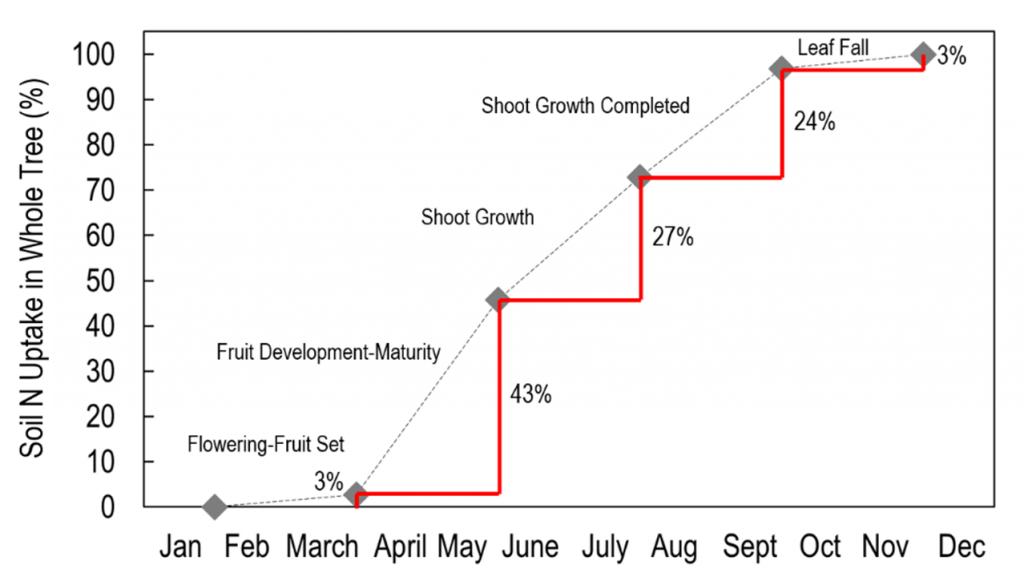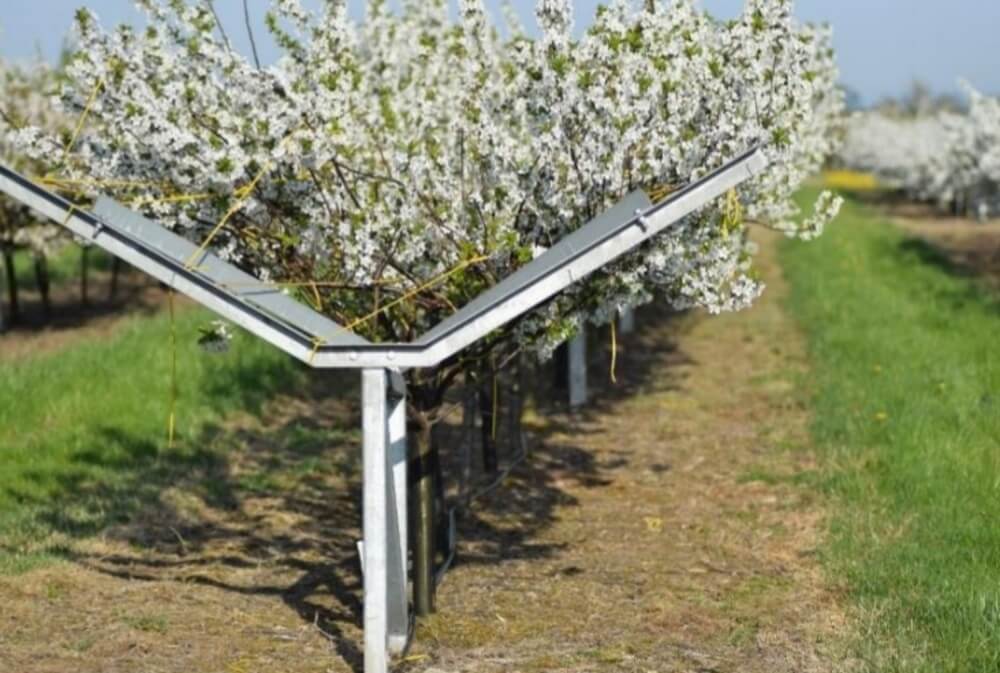Calcium (Ca) and boron (B) are essential elements in plant nutrition and play a fundamental role in the structure of the cell wall. Plant uptake from the soil occurs via the roots, and accumulation in the fruit depends on transport through the xylem vessels, as phloem mobility is very low.
The distribution of these elements in plant tissues therefore strongly depends on transpiration flow, which is often limited in fruits compared to leaves.
Recent study and methodology
A recent study conducted in Chile analyzed calcium uptake and distribution in sweet cherry under conditions of deficient or adequate boron levels in the soil. To do this, the researchers applied the isotope 45Ca to the soil and directly to the fruits to trace its movement.
The cultivar used for the study was “Regina”, grafted onto “Gisela 6” and grown in pots with a drip irrigation system.
The results showed how boron availability in the soil plays an important role in the plant's ability to translocate calcium to the aerial tissues and the edible part of the fruit.
Synergistic effects and findings
Under boron-deficient conditions, 45Ca was found in greater amounts in the root system and in the cherry pit, while aerial tissues and the fruit flesh showed lower concentrations compared to plants grown in soil with adequate boron content.
This behavior suggests a synergistic mechanism between Ca and B: boron deficiency seems to induce a blockage in calcium transport, possibly due to an alteration of the xylem functionality.
In fact, boron is known for its functions in meristems and in the biosynthesis of cell wall components such as pectic acids, which are also closely linked to the presence of calcium.
Quantitative data and physiological impact
The study demonstrated that with adequate boron content, 54.5% of the 45Ca applied to the soil was recovered by the plant, while under B deficiency the percentage dropped to 29.9%, with calcium accumulating in the roots.
The analysis of calcium distribution in the fruits also showed similar dynamics: in plants with adequate B, the share of 45Ca in the flesh and skin was higher, whereas under deficient conditions calcium was mainly localized in the pit, probably due to the loss of xylem functionality in the fruit during stage III of growth.
Practical implications and future directions
The practical implications of these results are significant: ensuring adequate boron nutrition not only supports balanced growth of the root system and meristems, but is also fundamental to ensuring proper calcium distribution in the fruits.
This can lead to better production quality, with cherries more resistant to calcium-related physiological disorders and potentially with longer shelf life.
The study sheds new light on the complex mechanisms of boron–calcium interactions, suggesting that fertilization practices attentive to the availability of both elements are strategic for managing sweet cherry tree nutrition and achieving high-quality fruits.
However, the authors emphasize the need for further studies to clarify in more detail the molecular mechanisms underlying the synergy between boron and calcium, and to translate these results into agronomic protocols for nutritional management in sweet cherry orchards.
Source: Bonomelli, C., Arredondo, G., Nario, A., Artacho, P., & Contreras, C. (2025). Calcium Allocation to the Tree Canopy and the Edible Part of Sweet Cherry Fruit Is Hindered by Boron Soil Deficiency. Agronomy, 15(3), 691. https://doi.org/10.3390/agronomy15030691
Image source: SL Fruit Service
Andrea Giovannini
University of Bologna (ITA)
Cherry Times - All rights reserved












